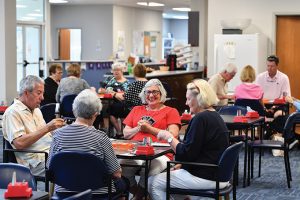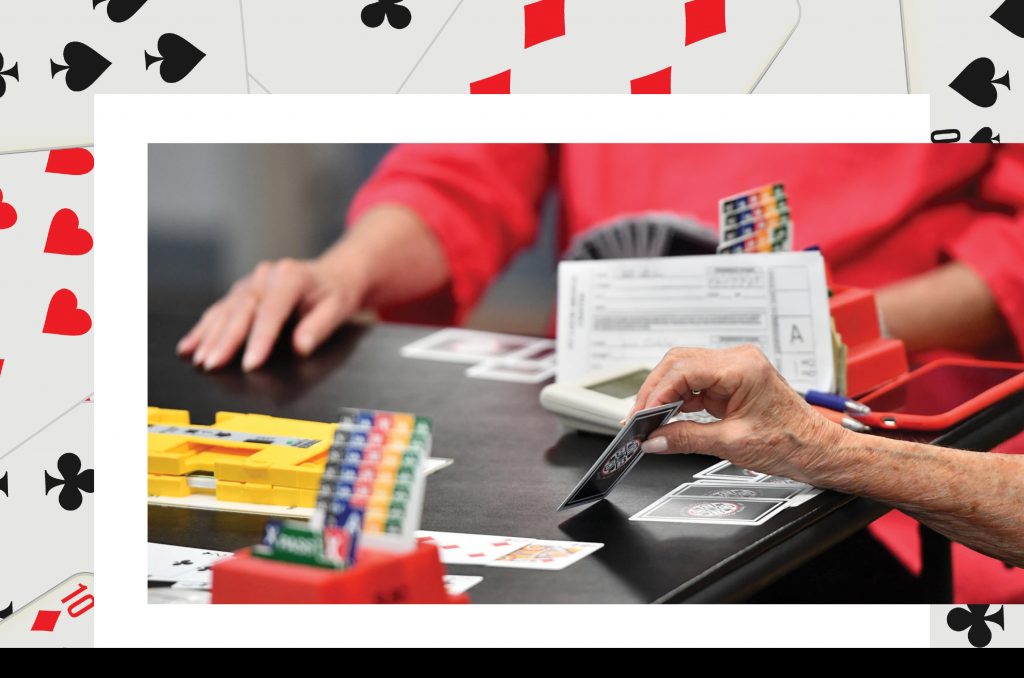
The St. Louis Bridge Center was founded by Bob Canfield. An avid player, he noticed that St. Louis lacked a good club for duplicate bridge. The nonprofit was formed to provide local players their own space to regularly play, learn and socialize. “People were playing bridge in hotel rooms, church basements and union halls,” says Dr. Richard Lazaroff, the center’s board president. “We provide a place to organize games in beautiful, well appointed facilities.” The center proved popular with players, and it grew to be one of the largest bridge clubs in the country. It operates on a membership model. Members pay fees, but non-members are welcome to participate in games and other programming.
Along with daily games, the center also has regular classes and hosts workshops led by internationally recognized experts, such as the longtime New York Times bridge columnist Philip Adler. Most recently, it held a seminar by author and accomplished player Jerry Helms. Programming at the center is designed for both new and veteran players. “We have classes geared toward people who have never played before, and others that are for people who want to improve their game,” board member Ann Lemp notes. “Our games also are structured around different levels. It’s set up so players can feel comfortable while they learn more about the game.”
For Lazaroff, one of the main appeals of playing bridge at the center is the competition. “Sometimes, when you play bridge socially, you don’t keep score, but here we do,” he explains. “It means you have to learn to play on a different level, and a big part of the enjoyment comes from improving your game. It’s not cutthroat, but it’s still competitive. As we get older, sports become more difficult. I may not be able to keep up with the younger guys on the golf course, but I can play against world class bridge players and win.”
The pandemic hit the bridge community hard, including The St. Louis Bridge Center. Games had to be temporarily postponed to ensure the wellness of members and other players, and the center implemented new health and safety measures. While face-to-face play has resumed, many players have transitioned to online bridge, but Lazaroff notes it can’t really compare to the experience of meeting with others in person. “For ten years, the center has been a place where people can be part of a community,” he says. “It’s terrific to be celebrating this anniversary, and I hope that with continued support we’ll be able to continue playing for another decade and beyond.”
Photos: Bill Barrett
